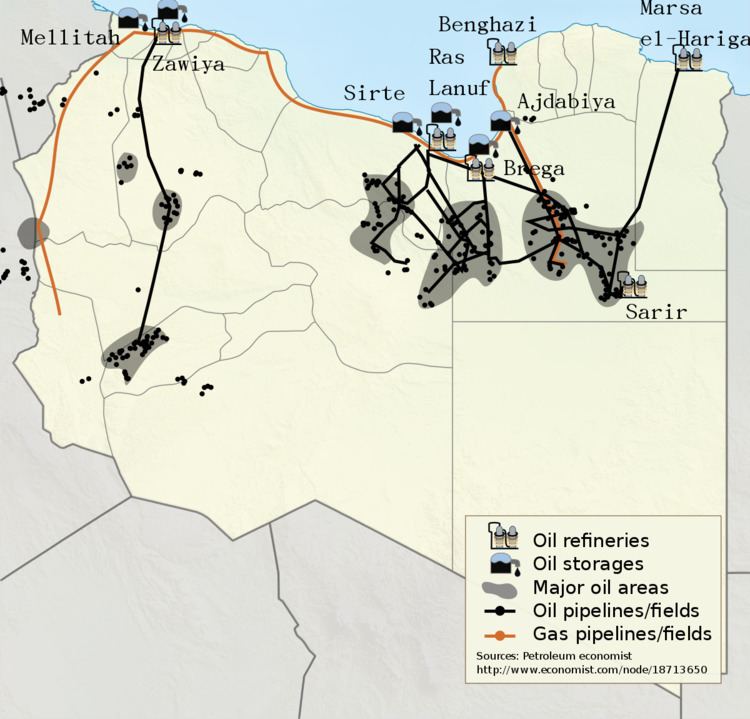 | ||
Energy in Libya describes energy and electricity production, consumption, and import in Libya. The petroleum industry is the primary engine of the Libyan economy.
Contents
Overview
From 2004 to 2008, Libyan energy production increased by 21.5% and energy exports increased by 27%. Domestic energy consumption in Libya was likely driven by industry and population growth. During this period, according to the International Energy Agency, the world population grew 5.3%, and the Libyan population grew 9.4%. As a net exporter of oil, Libya's energy production was also stimulated by growing populations in countries like Egypt (12.2% growth in that period), Yemen (13.4%), Sudan (16.4%), Saudi Arabia (2.9%), and Italy (3%).
Oil
Libya is a member of OPEC. In 2007, Libya was the world's 10th largest oil exporter, with 73 Mt in oil exports. As of 2009, Europe's share of Libya's oil exports was 78%. Domestically, the primary energy use in Libya was 237 TWh and 37 TWh per million persons.
The National Oil Corporation is the state oil company of Libya. The biggest oil producers in Libya are Eni, an Italian company, and Repsol YPF, a Spanish one. Other major producers in the country include BASF, Petrobras, Gazprom, Exxon Mobil, Pertamina, Nippon Oil, Sirte Oil Company, BP, Hess Corporation, JAPEX, and Oil and Natural Gas Corporation.
In 2010, 28% of Libyan oil exports went to Italy (over 284 barrels a day). In 2009, Europe's share of total Libyan oil exports were around 78%. Other importers in 2009 included China (10%), the United States (5%), and Brazil (3%).
